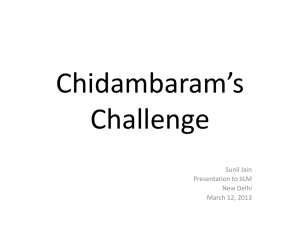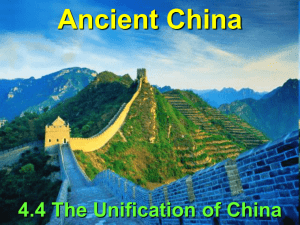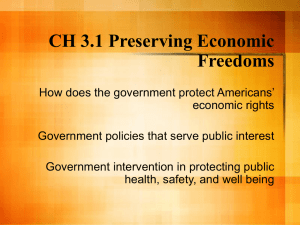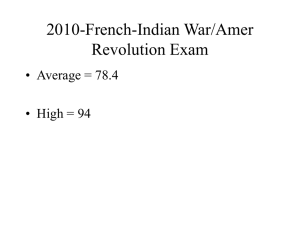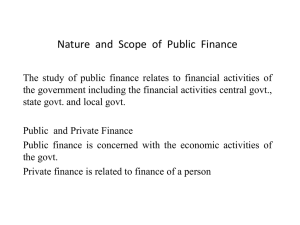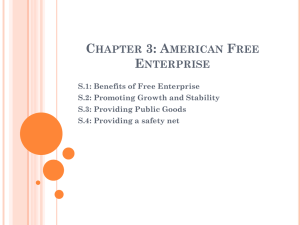Shaping a New Nation - Miss O`Mallan`s World
advertisement
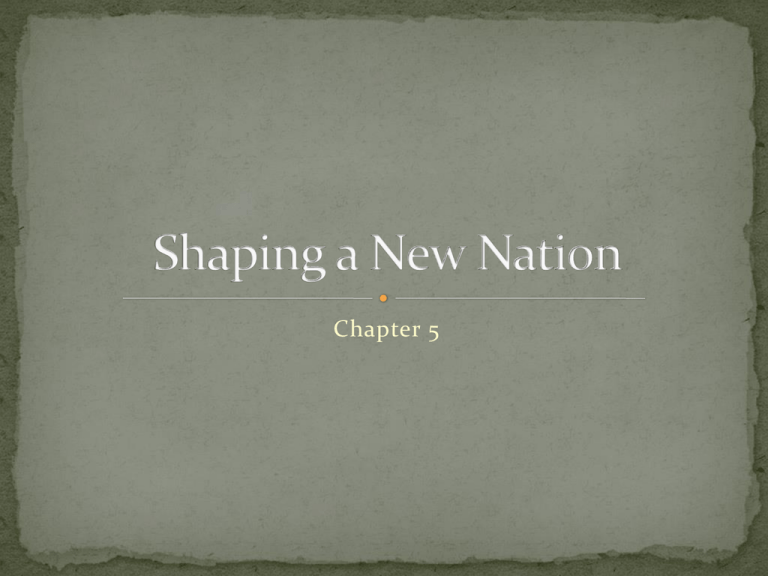
Chapter 5 Section 1 States relationship to National government Direct Democracy - too much power in the hands of the uneducated masses Republic - citizens rule through their elected representatives REPUBLICANISM- idea that govts should be based on the consent of the people Individual State Constitutions Guaranteed specific rights for citizens including freedom of speech, religion & the press Limited power of gov. leaders Liberty over Equality Differed on the right to vote White males could African Americans generally couldn’t Some states required property ownership Women could not vote How much representation each of the different sized states would receive in Congress? 2. How the states and federal government would share power? 3. How to govern the land west of the Appalachian Mountains? 1. 1. How much representation each of the different sized states would receive in Congress? States = political entities, not equal in size, wealth, & population Should delegates represent people or states? Members of Continental Congress decided each state would have 1 vote regardless of size 2. How the states and federal government would share power? Congress proposed a new type of govt in a set of laws: ARTICLES OF CONFEDERATION- 2 levels of shared fundamental powers State govts supreme in some matters, natl govt supreme in other matters Gave natl govt power to declare war, make peace, & sign treaties No natl power to enforce the laws of Congress 3. How to govern the land west of the Appalachian Mountains? LAND ORDINANCE OF 1785 federal government surveyed the land and sold it to settlers at affordable prices. Northwest Ordinance of 1787 organized the land into territories. established a procedure for how territories became states. Did little to unify the country States acted in their own interests with little regard for other states or the nation as a whole 1 vote/state created imbalance of political power 23,375= Georgia 235,000=Massachusetts All states had to agree to amend the Articles Changes in govt difficult to achieve Continental Congress could not tax (no revenue) Congress had no power to deal with foreign relations Spain closing off Mississippi, Britain refusing to leave Section 2 Daniel Shays- veteran of the Revolutionary War. Angry because of his debt due to taxation. 1787: Group of farmers revolted against the state (Massachusetts). Led by Daniel Shays. Called Shays’s Rebellion Farmers accused the state of taxing them too much Panic & fear throughout the nation (chaos & violence) Prior to Shays’s Rebellion James Madison (of VA) called a mtg. of state delegates to discuss interstate trade only 5 states represented After word spread about Shays’s Rebellion, all 12 states sent delegates (except R.I.) went to the Philadelphia convention 1. How do give fair representation to small and large states? James Madison’s VA Plan (representation based on population) Larger the state = more political pwr New Jersey Plan – each state equal rep. no matter size THE GREAT COMPROMISE-developed by Roger Sherman. Legislature w/2 houses: 1. House of Reps- based on size of popln 2. Senate – 2 members 2. Should slaves be included in population count? North– no, South– yes. Delegates compromised. Three-fifths Compromise- 3/5ths of number of slaves could be included in popln FEDERALISM- power divided between national & state POWERS NATIONAL GOVT PWRS: control of foreign affairs, providing national defense, regulating trade b/w states STATE PWRS: providing for & supervising education, establishing marriage laws, trade w/in state BOTH: right to tax, borrow money, pay debts, establish courts Delegates limited power of Fed. Govt seperated powers w/in Natl Govt Legislative Branch, senate, house of rep’s the power to make laws EXECUTIVE BRANCH: carry out the laws LEGISLATIVE: make the laws JUDICIAL: interpret & settle disputes CHECKS & BALANCES- no 1 branch became too powerful Electoral college- cast ballots for candidates Section 3 Background Delegates to the Philadelphia convention drafted the Constitution, newspapers printed the full text & Americans were shocked (radical changes) Expected amendments to the Articles Supporters & opponents battled over controversies FEDERALISTS division of pwrs & checks & balances would protect Americans from the tyranny of centralized auth. George Washington, James Madison, & Alexander Hamilton Garnered much support from urban centers (regulate trade) The Federalist: analysis & explanation of pwrs & limits on pwr of majorities ANTIFEDERALISTS list of possible abuses of pwr by a strong central govt; Contitution’s lack of protection for indiv. Rights Patrick Henry, Samuel Adams & Richard Henry Lee Garnered much support from rural areas (people feared strong govt that might add to tax burden) Letters from the Federal Farmer publication listed rights they believed should be protected (freedoms: press, rel., unreasonable search, right to trial by jury) U.S. Constitution did not guarantee any rights for people or states. Lack of a bill of rights (formal summary of citizens’ rights & freedoms) serious drawback Citizens wanted written guarantees of freedom of press, speech, & religion; trial by jury & right to bear arms Bill of Rights was added in order to ratify the Constitution New govt began 3/4/1789 Sept. 1789 Congress submits 12 amendments to state leg. for ratification December 1791: 3/4ths of the states ratified 10 of the 12 amendments: BILL OF RIGHTS Note: Protection of rights & freedoms did not apply to Native Americans & slaves. Women were not mentioned Blacks were allowed to vote in some northern states
